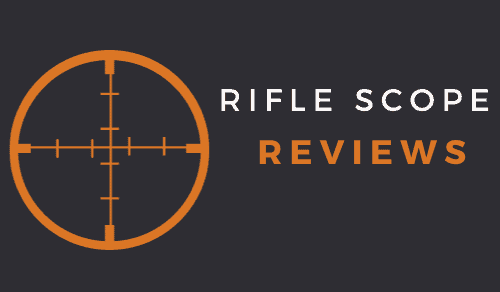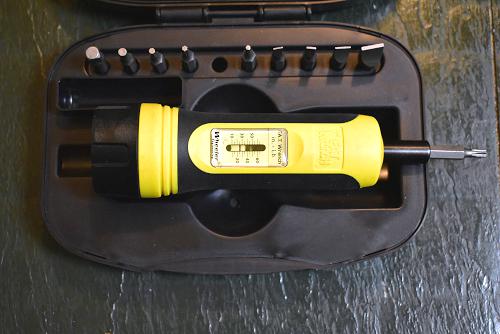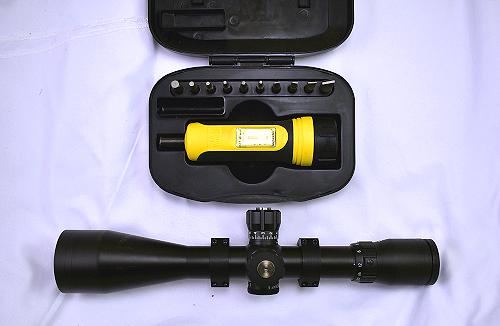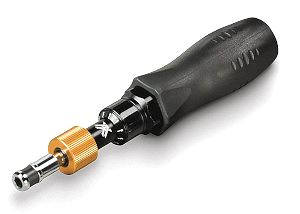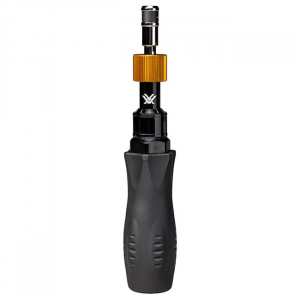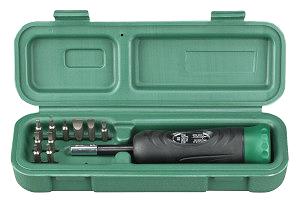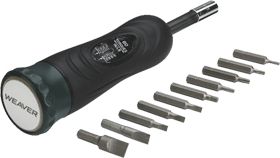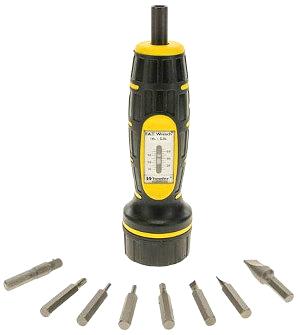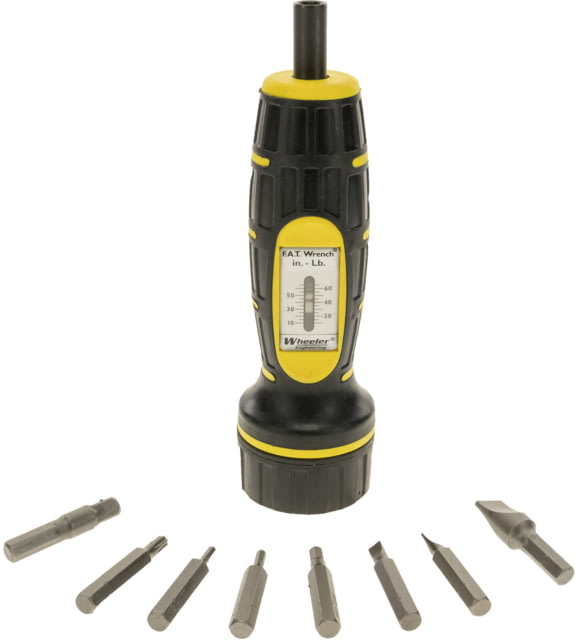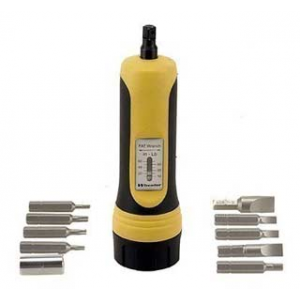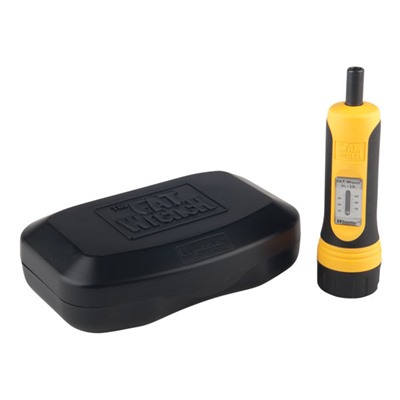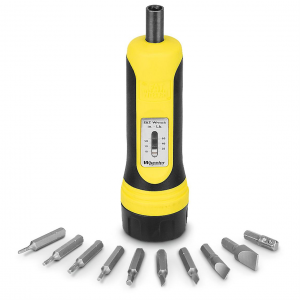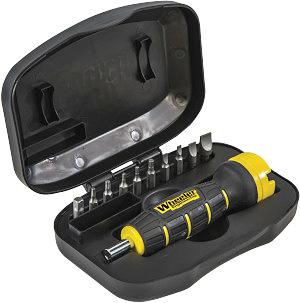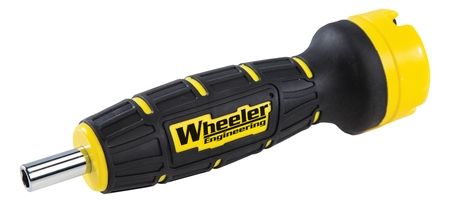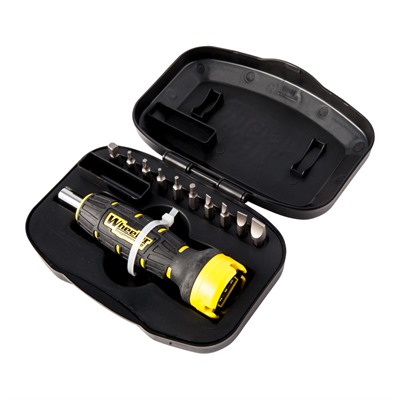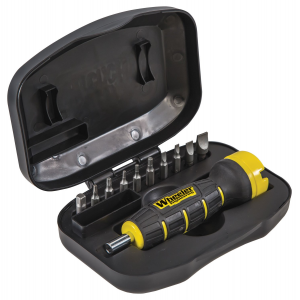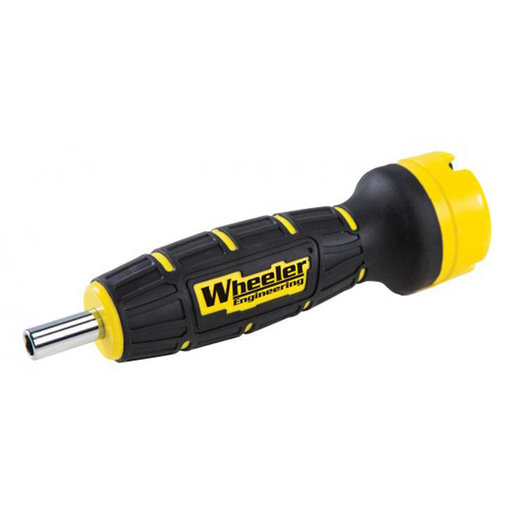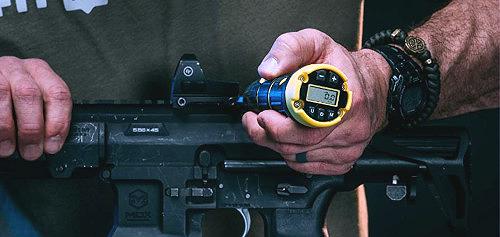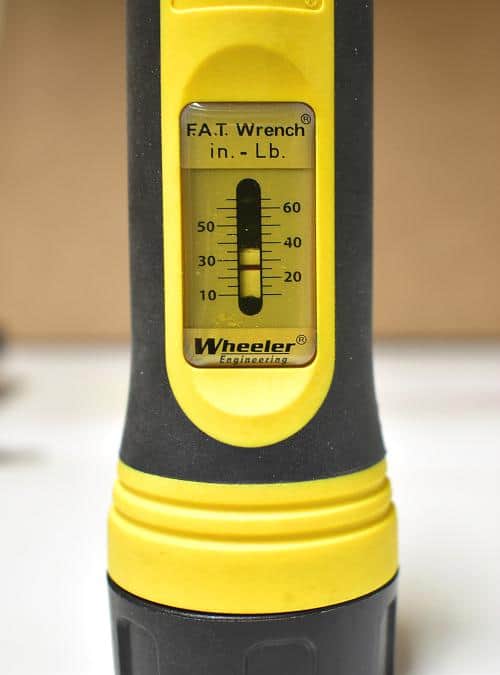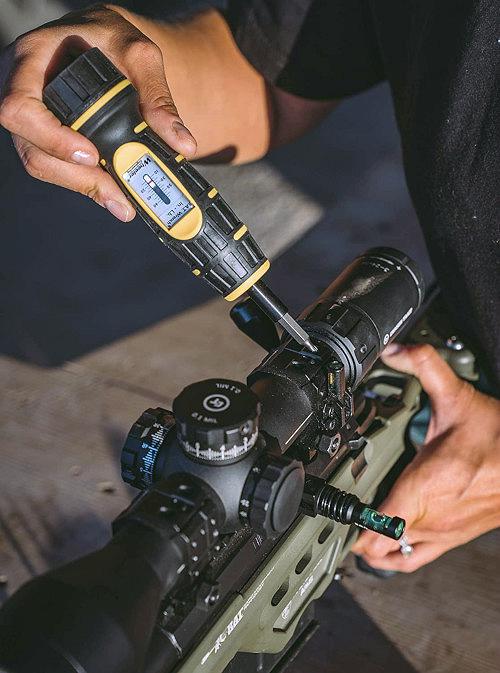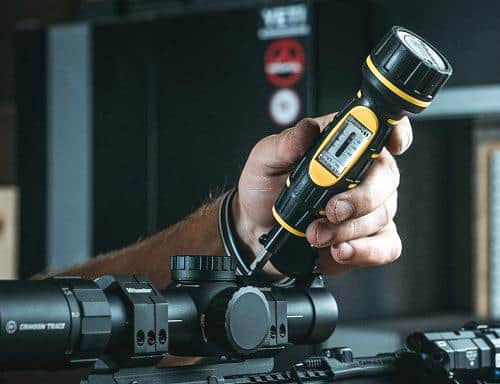As an Amazon Associate I earn from qualifying purchases. Amazon and the Amazon logo are trademarks of Amazon.com, Inc, or its affiliates.
When it comes to mounting optics, most people prefer to do it themselves versus having it done by a gunsmith. Truth be told, mounting a scope isn’t all that hard, but there are a few tools and devices that will make the job easier. One such tool is a torque wrench (also called a torque driver). The most common question I’m asked isn’t about how to use a torque wrench; it is asking about the best scope mounting torque wrench to use.
In an effort to answer that question, I’m going to dive into the topic of scope mounting and cover the ins and outs of scope torque wrenches and why they are an essential gunsmithing tool.
What is Torque and Why is it Important
Without going too far into the weeds from a physics standpoint, “torque” is loosely defined as the “twisting of an object around an axis.” For the purposes of this article, we will be using it to define the moment of force being applied to the screws or bolts attaching the scope base to the rifle and attaching the scope with scope rings.
The easy way to understand torque with scope mounting is a measurement value or range of values defining how tight the screws or bolts are screwed or bolted down.
How is Torque Measured?
Torque is measured differently depending on geography. In the United States, torque is most commonly measured in an inch per pounds metric (customarily displayed as in/lbs.) or a foot per pounds metric (customarily shown as ft/lbs.). Scopes and rings from Europe typically use a measurement called Newton Meters (which is commonly displayed as Nm).
In the United States, the inch per pounds metric is most commonly used for gunsmithing and scope mounting, while the foot per pounds metric is more common in the automotive industry.
A torque wrench is a specially made tool required to correctly measure the amount or volume of torque being applied as the screw or bolt is being tightened.
A universal recommended torque setting does not exist from a scope and rings perspective. However, most well-known brands of riflescopes and scope rings offer specifically recommend torque settings that apply to their products.
Do I Have to Have a Torque Wrench to Mount a Scope?
A torque wrench is not absolutely required to mount a scope but is highly recommended.
Without a torque wrench, you’re just guessing about the amount of torque being applied as the scope bases or scope rings are tightened down. Without having a method to measure the amount of torque, you run the risk of either not providing sufficient torque (under-tightening) or exerting too much torque (over tightening).
Under Torqued
Scope rings or scope bases that are under tightened can lead to several issues, with most being tied to the under tightened rings or bases shifting over time or under repeated recoil. This shifting leads to a point of impact change, which may come at the absolute worst time. And repeated recoil from even low recoiling calibers can cause under tightened bases or rings to shift.
This shifting is a common issue I encounter at my day job when a customer brings in a rifle or scope to be checked for accuracy issues. Unfortunately, about half the times in these situations, the rings or bases have become loose enough for me to shift the scope manually. I completely understand that screws or bolts can and may become loose over time, but, in most cases, they were not mounted initially using a torque wrench.
Over Torqued
The flip side of under torquing the mounting screws is to over-torque them. As a result, the torque applied exceeds the manufacturer’s suggested maximum torque in this scenario, leading to potential issues.
Over torquing leads to problems such as stripped screws or a damaged scope tube. To reduce weight, most scope brands manufacture the tube from a thin aluminum. This material is designed to withstand the basic wear and tear from everyday use but not designed to withstand pressure or impact above a certain level.
Over torquing can cause the tube to bend, which can cause the seals to break, so the scope is no longer waterproof and fog proof.
Types of Torque Wrenches
Torque wrenches are designed or offered in two distinct styles:
- Driver Style
- Lever Style
Let’s discuss each style in more detail:
Driver Style
A driver-style torque wrench is one that is designed to look and function like a screwdriver or bolt driver. This style usually features a gripping handle and comes with various driver bits. The torque is set on the handle, and then the wrench stops turning when the specific torque setting is reached.
This style is the more common style for gunsmithing and scope mounting.
Lever Style
A lever-style torque wrench is one designed with a more extended handle and a socket-like tightening action. As a matter of fact, most lever-based torque wrenches look like a socket driver. This style can vary in size from relatively small to larger, more heavy-duty models. The socket portion of the driver usually features a gauge that controls the torque setting.
The lever style is far more common in the automotive repair industry and not very commonly seen for gunsmithing work.
Torque Differences Between Scope Bases and Scope Rings
Another point worth mentioning involves the differences in suggested or recommended torque settings between scope bases and scope rings.
Depending on the product maker or manufacturer, it is not uncommon for the suggested torque values for scope bases to be significantly higher than the recommended torque values for scope rings.
The difference between the two values can be confusing for some, but it’s completely normal.
Towards the end of this article, I’ve put together a gunsmithing torque wrench buyers guide that offers additional information about popular features and desirable functions for rifle scope and gunsmithing torque wrenches.
Top Five Scope Torque Wrench Models
Listed below are my top five torque wrench models that are ideal for mounting riflescopes and general gunsmithing work. In addition to going over each torque wrench model, I also delve into the pros and cons of each as well.
Vortex Optics Torque Wrench
The Vortex torque wrench is a driver-style wrench that offers torque settings ranging from 10 inch/pounds up to 50 inch/pounds. One feature that I really like about the Vortex wrench is that it provides adjustment changes in 1 inch-pound increments. I really like that level of granular adjustment as there may be times when you need an odd number of inch/pounds of torque, and less adjustable wrenches can’t accommodate the need.
This model comes with a total of 8 different bits that break down as follows:
Five hex bits, including:
- 9/64″
- 3/16″
- 2mm
- 2.5mm
- 3mm
Three Torx bits, including:
- T10
- T15
- T25
The driver also includes a socket head, ½” socket, and ¼” socket adapter.
The torque is easily adjusted by pulling up on the gold ring, turning the torque to the desired inch-pounds settings, and releasing the gold ring.
The wrench also comes with a calibration certificate, showing the ISO testing number, date of calibration, test results, and the serial number of the wrench.
Here are features or aspects of this Vortex wrench that I liked and disliked:
| Pros | Cons |
| Comfortable grip that is easy to turn
Wide range of adjustments in 1 inch/pound increments. Comes with the most popular bits associated with scope mounting. Is covered under Vortex’s Lifetime Warranty program (which is major bonus) |
Not the most expensive gunsmithing torque wrench on the market, but not the cheapest either.
I’d like to see more bit options included as this wrench seems geared towards the screws most commonly used on Vortex scopes (which makes sense). |
If you’re in the market for a Vortex Torque Wrench, here are a few that I located for sale:
Weaver Gunsmithing Torque Wrench
The Weaver brand name has been synonymous with scopes and scope mounts since the early 1970s. Given the large number of rings and base options offered by Weaver, it only makes sense that they would also offer a scope mounting torque wrench.
This Weaver wrench offers torque adjustments ranging from 10 inch-pounds up to 50 inch-pounds, with a five inch-pounds range of adjustment.
The wrench comes in a case that includes ten variously sized bits designed to accommodate the most popular scope mounting screws.
Here are a few things that I liked and disliked about this specific wrench model:
| Pros | Cons |
| Features a magnetized socket head that helps hold the bits in place during use.
Easy to adjust and use. Comes with a variety of bits that will support most scope mounting needs. |
The small numbers on the adjustment dial coupled with the five inch-pound adjustment range make it difficult to set for precise torque settings.
This model does not feel as well made as the Vortex or Wheeler wrenches. |
Here are a few locations where I found the Weaver Torque Wrench on sale:
Wheeler Firearms Accurizing Torque Wrench
Wheeler Tools has been a leader in gunsmithing tools for years and is one of the best-known names in the industry. They offer a variety of gunsmithing tools, including several torque wrench options.
The best known and most popular torque wrench model they offer is the Wheeler F.A.T Torque Wrench, with the F.A.T. designation meaning “Firearm Accurizing Torque.” The F.A.T. model is available in two styles: a manual and a digital version.
Let’s focus on the manual version first.
The manual F.A.T. wrench (or as it’s typically written, FAT wrench) offers a torque range from 10 inch/pounds up to 65 inch/pounds, in 5 inch/pounds increments.
The wrench comes in a case that includes 10 bits that cover the heads of the most popular and standard screws seen in gunsmithing work. A calibration certificate is also included that confirms the calibration date and measurements.
Here are the features that I liked and disliked about this Wheeler wrench:
| Pros | Cons |
| Well built and easy to use.
Even though the adjustments are limited to 5 inch/pounds, the easy-to-read adjustment window makes it possible to adjust down to a +/- 1 inch/pound range. A good, dependable value for the money. Is covered by a better than average warranty from Wheeler but limited to the original buyer or owner. |
While it comes with 10 bits, I wish it came with more. However, if you encounter a situation where you need another sized bit that is not included in the package, they are easy to find and relatively inexpensive. |
If you like the looks and price of the Wheeler FAT Wrench, here are a few locations where I found them on sale:
Wheeler Digital F.A.T Wrench
If you prefer to have exact torque settings, then your best bet will be a digital torque wrench. The Wheeler Digital FAT wrench is one to check out as it offers a torque setting range of 15 to 100 inch/pounds and can be set to an exact torque number.
This wrench features visual and audible notifications when the desired torque has been reached.
This digital Wheeler wrench comes in a package that includes 10 of the most popular screw bit sizes and styles. Like the manual Wheeler FAT wrench, a calibration certification is also included in the package.
Here are a few things that I liked and disliked about the Wheeler Digital FAT Wrench:
| Pros | Cons |
| Allows for a very precise torque setting. Much more accurate compared to most manual models (with the exception of the Vortex model listed above)
Easy to read digital format Well built model made to last |
Runs on batteries that will eventually have to be replaced.
I’d like to see more bits included, but that’s my opinion on all scope mounting torque wrenches across the board. The digital portion of the wrench is an electronic-based component, so it’s another potential piece of the wrench to malfunction or fail. |
If the Wheeler Digital FAT Wrench interests you, here are a few popular shopping destinations where I found it available:
My Favorite Models
If you are not on a strict budget and want my favorite wrench, I’d go with the Vortex Torque wrench above.
If you are on a budget, but want a good torque wrench, I’d go with the Wheeler FAT Wrench model as it’s less expensive and will meet the needs of most people.
Scope Mounting Torque Wrench Buying Guide
With all the different brands and styles of torque wrenches on the market today, choosing the right wrench for your individual needs can be a challenge.
Here are a few things to consider when shopping for a torque wrench:
Gunsmithing Torque Wrench versus Automotive Torque Wrench
As I mentioned previously, torque wrenches come in two main styles: driver style and lever-style wrenches. Driver-style wrenches are generally better suited for gunsmithing work, while lever-style wrenches are better suited or geared towards automotive work.
Here are a few things to look for to ensure that the torch wrench you’re considering will work for gunsmithing purposes:
(1) It’s specifically marked, labeled, or marketed as a gunsmithing tool.
(2) The wrench reads torque values in inches per pound versus foot per pound. Most all recommended scope mounting torque values are presented in the inches per pound value.
Torque wrenches built for automotive use tend to be larger sized, lever-style or socket style, and designed to measure torque in an inches per pound value.
Precision Capability
Another factor to consider with a torque wrench is accuracy. Again, it’s important that the readings be accurate to ensure that you don’t over-torque the scope bases or scope rings.
Most good quality torque wrenches offer the following features:
(1) Come with a certificate of calibration that ensures that the wrench was tested for accuracy and passed the test.
(2) Indicates that the measurements are within a +/- 2 deviation. I’d suggest staying away from a wrench with a deviation measurement exceeding the +/- 2 mark.
All of the torque wrench models that I’ve listed above meet those criteria.
Easy to Read Measurements
In conjunction with accurate readings, another essential feature is easy-to-read measurements. Some torque wrench models have designs that are easier to read than others. With the wrench models I reviewed above, I tried to note the models that offered an easy-to-read or interpret display.
Ideally, the display area or wrench read-out area features clearly marked numbers with a clear delineation between numbers.
As I’ve gotten older, I find that I have trouble reading the wrench models with smaller displays or numbers.
Consider Quality over Bells and Whistles
As you shop for a new torque wrench, you’ll undoubtedly come across models loaded with “extra” features or what I like to call bells and whistles.
Personally, I prefer a torque wrench that is repeatably accurate, easy to use, and easy to read over one with extra features or “bells and whistles.” However, I also am willing (and have) paid more for a good quality model that will last versus a less expensive but cheaply made model.
Able to accommodate a wide variety of screw/bolt styles
This feature set is two-fold as I consider the following to add value to a torque wrench:
(1) Comes in a kit with a large number of usable bits
(2) Has the capability to accept additional generic bits as needed.
When shopping for a torque wrench, I’ve always leaned towards models that came with a decent number of usable bits. I say usable as I’d rather have a wrench that comes with 10 of the most common screw bits included versus one that comes with 25 oddball bits that are not common in the rifle scope industry.
In addition, I also prefer a wrench that will accept additional generic bits that I may purchase later. I mention the “generic” bits as some of the higher-end wrenches are designed to only accept proprietary bits produced by the brand. A wrench made to only accept proprietary bits won’t work with generic style bits from the hardware store.
All of the wrench models that I suggested above are built to accept most any generic bits as needed.
Other Gunsmithing Uses as Well
Although we are focusing on torque wrenches for scope mounting purposes, you’ll find that there are many other gunsmithing and non-gunsmithing situations where a torque wrench is beneficial.
Here are a few other gunsmithing situations where a torque wrench is useful:
- Mounting a rifle back into the stock. Most rifle brands have suggested torque specifications for the action screws that secure the rifle into the stock.
- Attaching a Picatinny rail to a rifle or AR.
- Installing a drop-in trigger in a rifle or pistol.
The list goes on, and you’ll most likely encounter situations where a torque wrench is suggested.
FAQS
Here are some of the more frequently or commonly asked questions that I see regarding torque wrenches and scope mounting:
What are the best scope ring torque specifications?
That’s an extremely difficult to answer as each scope brand or scope base/rings manufacturer has specific torque range suggestions for their products. In some cases, the torque ranges vary significantly based on the base or scope ring materials. For example, there’s a higher torque value for steel scope rings versus alloy scope rings.
First chance I have, I’m going to put together a list of all the suggested torque settings for each rings and bases manufacturer.
What’s the ideal Remington 700 scope base torque?
The answer will depend on the maker or brand of the Remington 700 scope base being used. Some base maker brands recommend a torque range of 20 to 25 inch/pounds, while other brands suggest a torque range of 28-30 inch/pounds.
I’d suggest referring to the torque specifications recommended by the actual manufacturer or brand that offers the scope base.
I’ve been working in the firearms and sporting optics industry for over 20 years, with a personal and professional interest in all things related to rifle scopes, Through a combination of work experience, formal training, and personal experiences, I have extensive experience mounting, testing, and evaluating different rifle scope models across most major optical brands.
